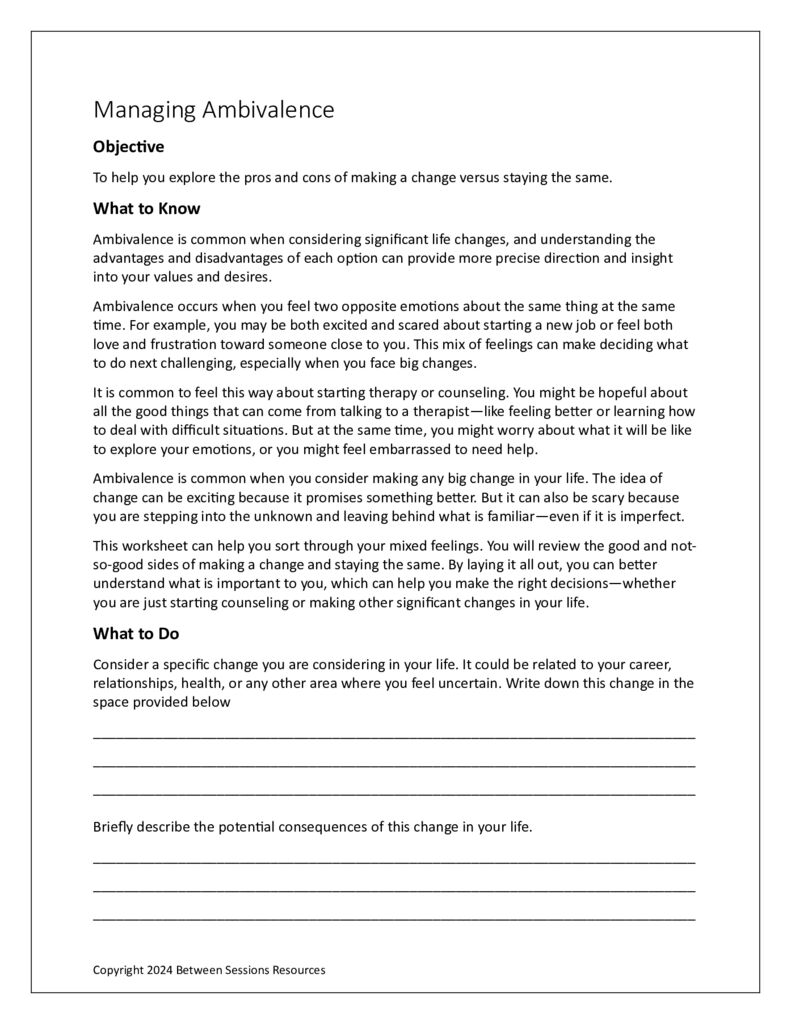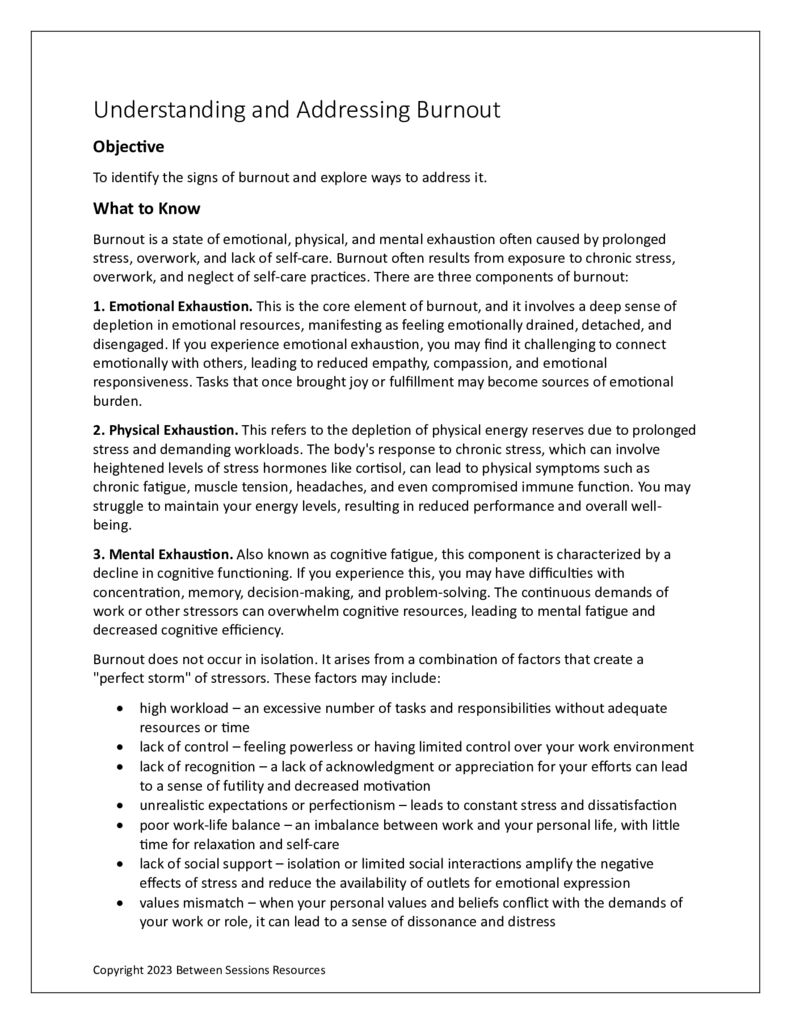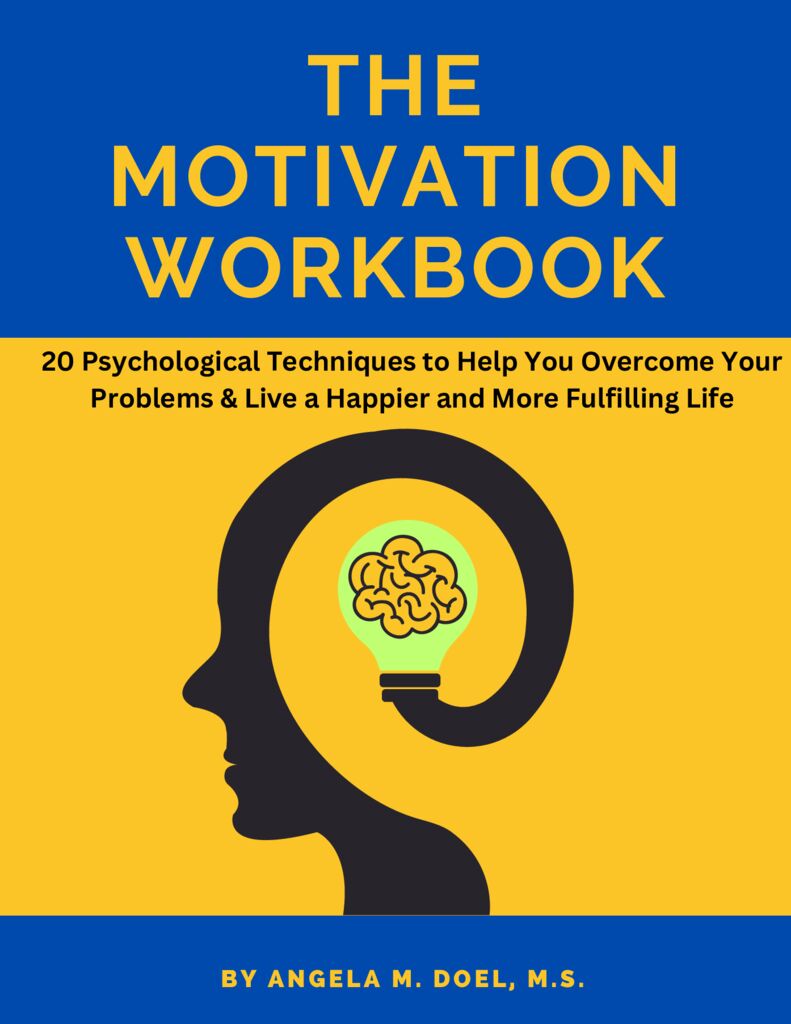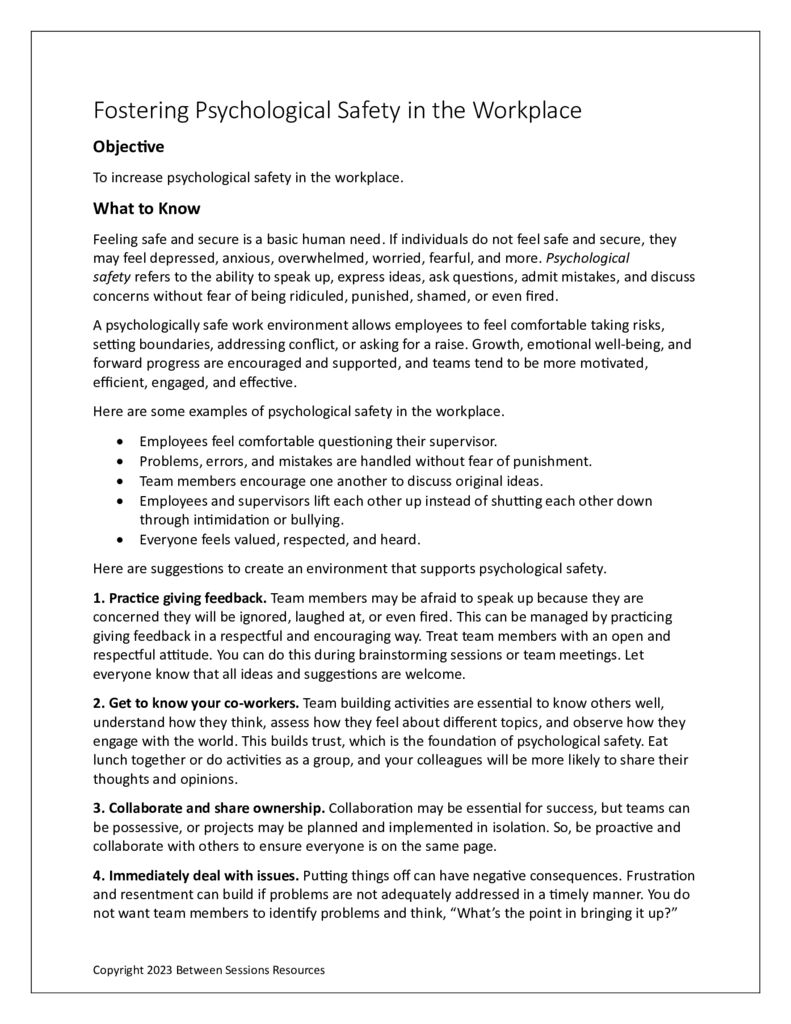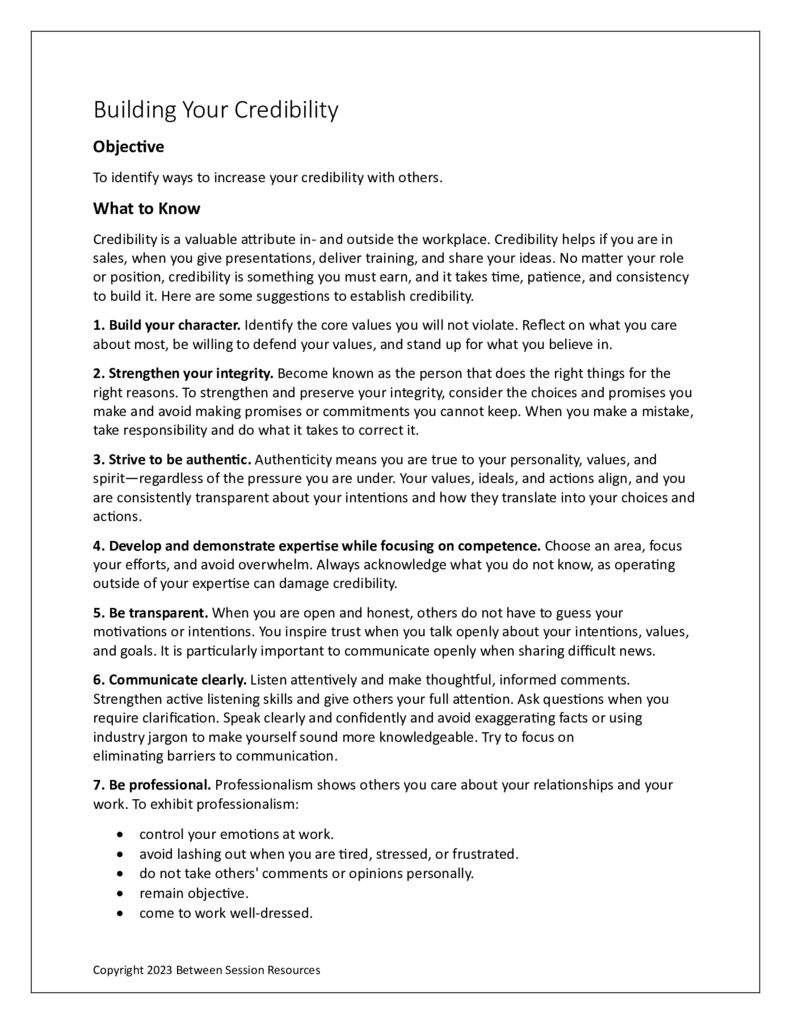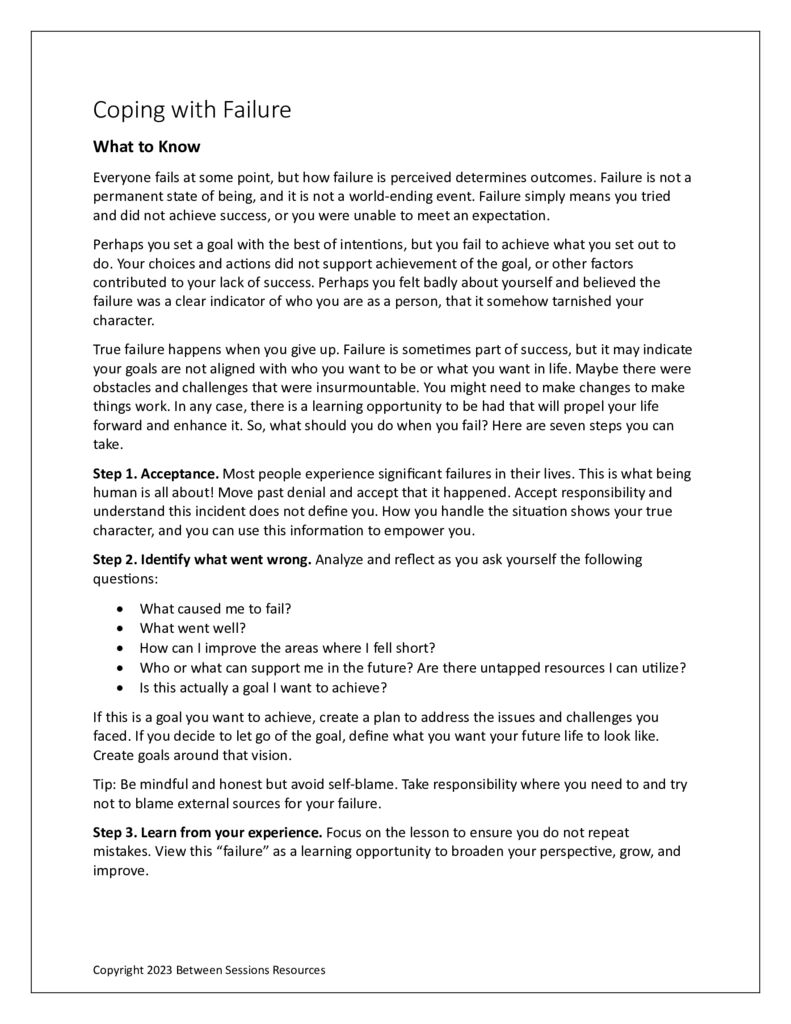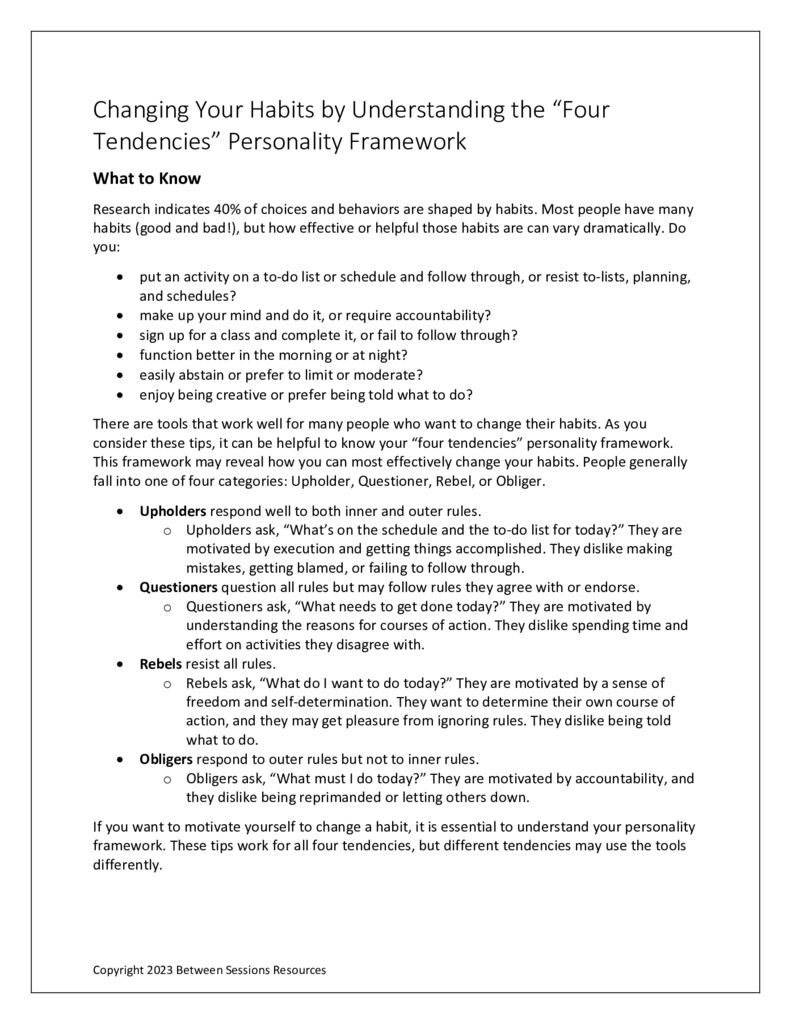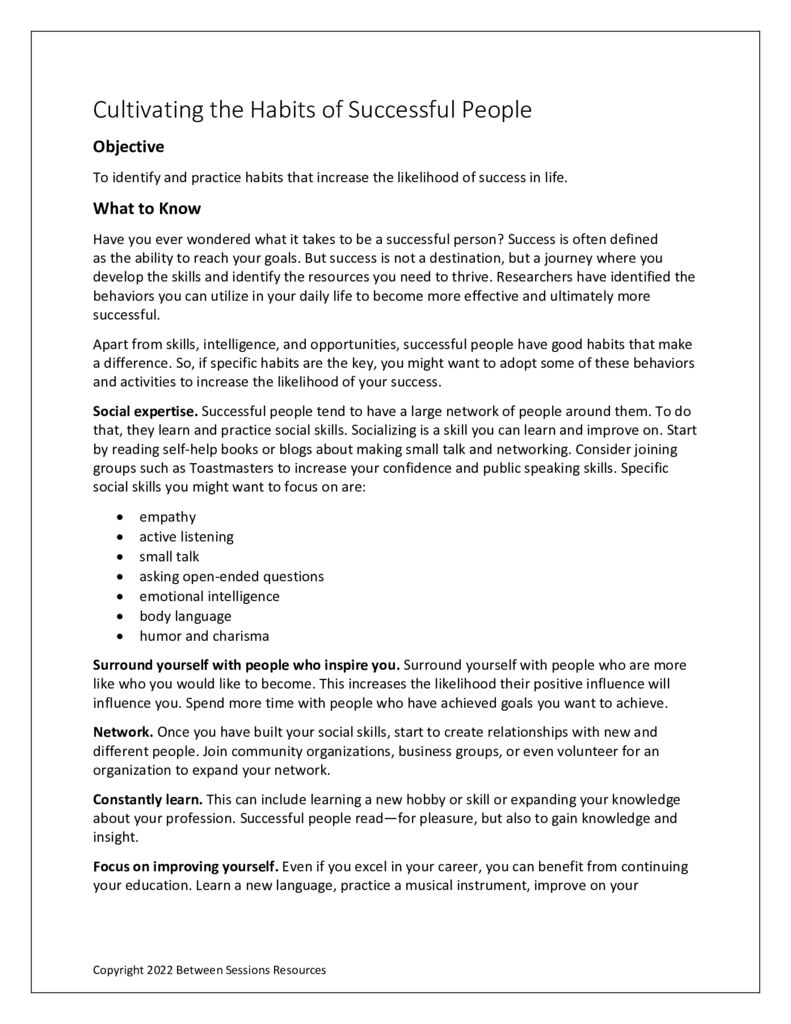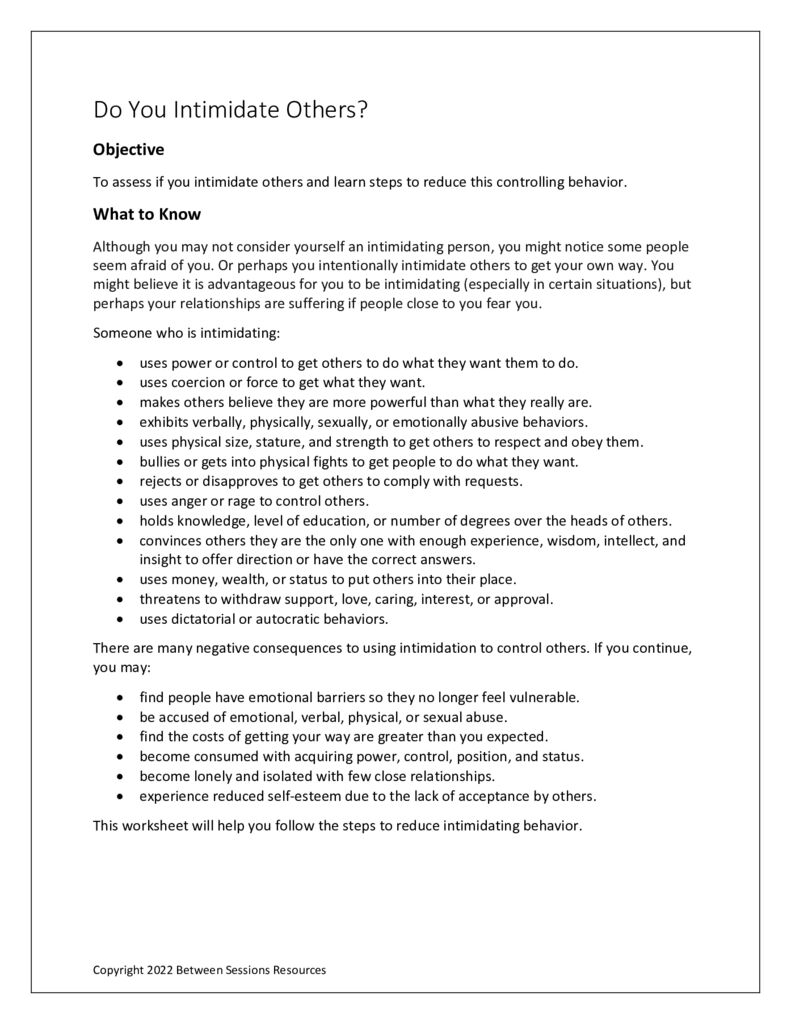The SMART goals framework is an evidence-based method that helps people set clear, actionable, and realistic goals. This approach helps people to define what they want to achieve and develop a plan for reaching those goals with greater confidence and focus. The acronym is designed to help people set goals that are specific, measurable, achievable, relevant, and time-bound. The worksheet takes people through the process of creating their goals. (1124, goals, solution-focused)
This worksheet encourages people to explore how they deal with ambivalence in their lives thinking about the pros and cons and the consequences of making changes. It also helps people identify the barriers to change and consider how they can be overcome. (0424, depression, anxiety, relationships, decisions, problem-solving, CBT)
This worksheet explains the different causes of feelings of “burnout” and provides a checklist that helps people identify the physical, emotional, and behavioral signs that they are being affected by this problem. It goes on to help people identify where their stress is coming from and develop short and long-term goals to address the problems contributing to their burnout. (0823, work stress, family stress, burnout)
This workbook has 20 techniques to help people find the motivation they need to change. Motivation is a much more complex issue than most people, involving at least 12 areas of the brain. This workbook goes well beyond popular psychology concepts of visualization and affirmations, using evidenced-based techniques the workbook helps people set goals, increase flow experiences, improve self-efficacy, overcome doubt, and more. (0823. resistance, change, therapeutic alliance)
A psychologically safe work environment allows employees to feel comfortable taking risks, setting boundaries, addressing conflict, or asking for a raise. Growth, emotional well-being, and forward progress are encouraged and supported, and teams tend to be more motivated, efficient, engaged, and effective. This worksheet encourages the creation of a psychologically safe workplace through a team-building activity and problem-solving exercise (0523, coaching, workplace issues, career, management, leadership, team building, psychological safety)
This worksheet is designed to help people build their credibility in the workplace and in the community. It suggests 12 ways to build credibility such as being open to new ideas, being transparent, and communicating clearly. The worksheet includes a chart for people to record their “credibility practices” for a month. (0323, workplace issues, self-esteem, relationships)
This worksheet is designed to help people cope with failure using a 7-step process. (0123, depression, work issues, self-esteem, self-efficacy)
This worksheet asks people to think about their personality in one of four categories: upholder, questioner, rebel, or obliger. It then gives 7 techniques to help people can change a habit. Charts are included to help people track and change their habits (0123, habits, problem-solving, impulse control)
This worksheet details the habits and skills common to successful people, such as social awareness, networking, a passion for learning and self-improvement, and so on. The worksheet includes a chart for people to keep track of their success-oriented activities and behaviors. (1122, work, success, motivation, achievement, fulfillment)
This worksheet is designed for people who may not be aware that they are intimidating to others. The worksheet defines behavior that makes up intimidation and the negative consequences intimidation has on others. The worksheet then gives 8 steps to help people reduce non-intentional intimidation. (0722, social skills, bully, workplace, relationships)


